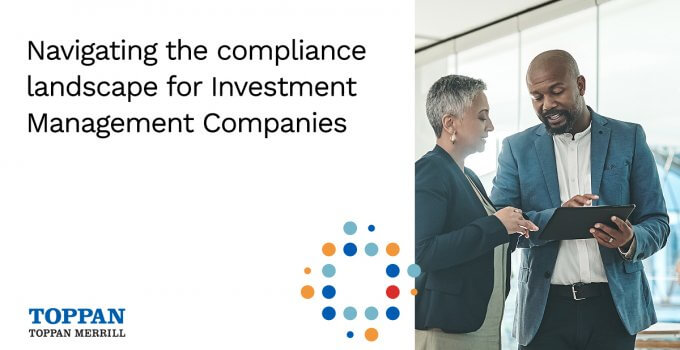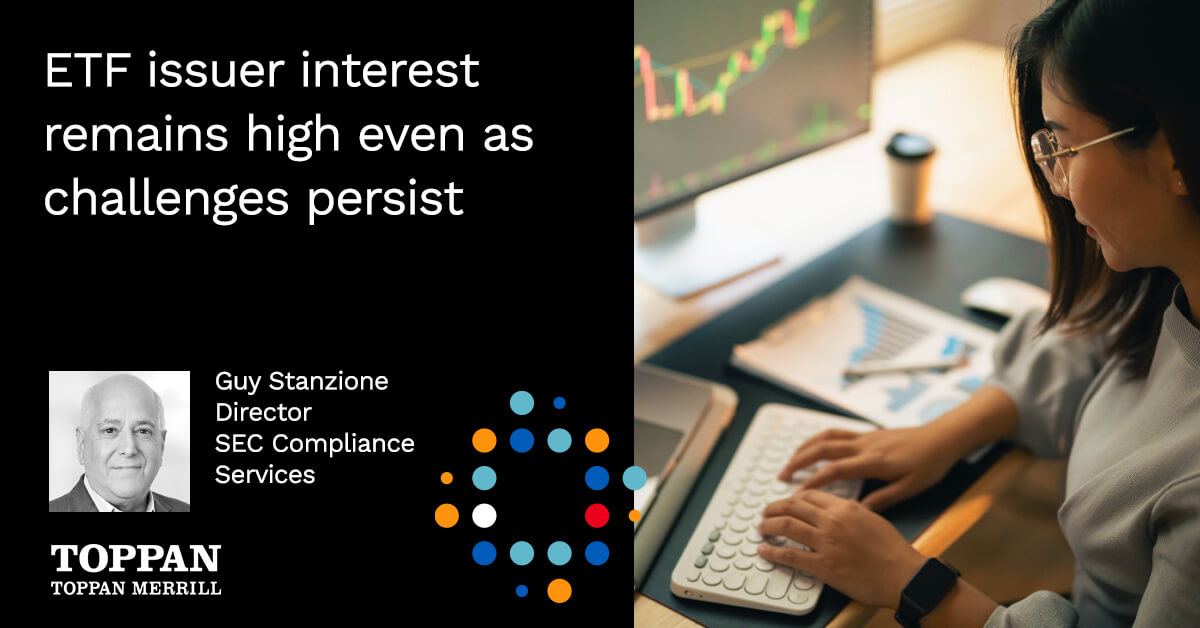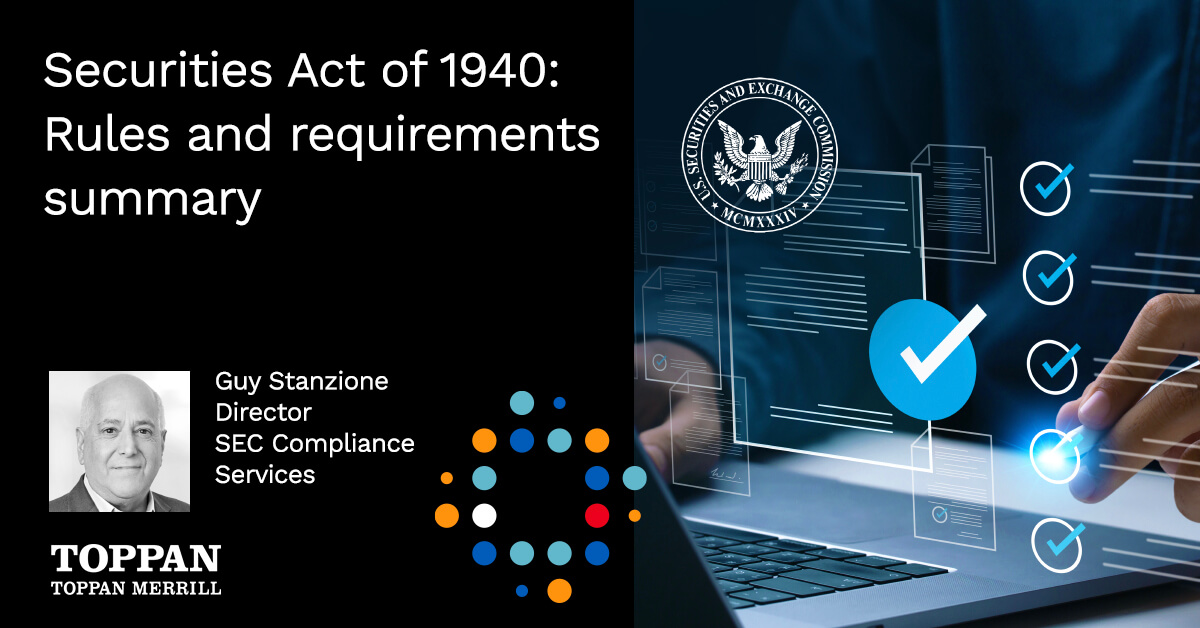Prospectus Services
An open-end mutual fund prospectus is a required document that provides detailed information about a mutual fund to potential investors, outlining its core characteristics and how it operates.
Summary Prospectus:
In lieu of a full prospectus, a shorter “summary prospectus” is available, which contains much of the key information found in the prospectus. However, the full prospectus contains more comprehensive disclosure related to the fund for potential investment.
Mutual fund prospectuses include:
- Investment Objective and Strategies: This section clearly defines the fund’s investment goals (e.g., long-term growth, income) and the strategies it employs to achieve them, such as focusing on a specific sector, region, or using particular types of securities.
- Risks: Every investment carries risk. The prospectus outlines the potential risks associated with the fund, including market risk, credit risk, interest rate risk, and concentration risk, so investors can determine if it aligns with their risk tolerance.
- Fees and Expenses: This section details all the fees and expenses associated with investing in the fund, including shareholder fees and annual fund operating expenses.
- Performance: While past performance isn’t indicative of future results, the prospectus provides historical performance data to help investors understand the fund’s track record.
- Management: This section includes information about the fund manager or management team, including their experience and investment style.
- Purchase and Sale of Fund Shares: Details on how to buy and sell fund shares are included, along with any relevant policies or restrictions.
- Tax Information: The prospectus outlines the tax implications of investing in the fund, such as how distributions are taxed.
- Financial Intermediary Compensation: Intermediary compensation refers to the payment made to a third party (the intermediary) for facilitating a transaction or providing a service between two other parties. This compensation is typically a fee or commission earned by the intermediary for their role in connecting buyers and sellers, or for assisting in the completion of a transaction.
- Other Information: The prospectus also contains additional information that can assist investors in making informed decisions, such as the fund’s holdings, financial statements, and information about the fund’s structure and operations.
Why is it important?
The prospectus is a critical resource for investors because it:
- Helps in decision-making: Provides essential facts to determine if the fund aligns with an investor’s goals and risk tolerance.
- Ensures transparency: The SEC mandates that prospectuses disclose all material information, protecting investors from misleading claims.
- Outlines the “rules of engagement”: It defines the fund’s investment parameters, including the types of investments it can hold.
Where to find a prospectus?
You can obtain a mutual fund prospectus from several sources:
- Fund Website: Most mutual fund companies provide digital copies of their prospectuses on their websites.
- Financial Advisor/Broker: Your financial advisor or broker can provide you with a copy.
- SEC EDGAR Database: The SEC’s EDGAR database contains all filings by publicly traded companies, including mutual fund prospectuses.
For more detailed information about mutual funds and ETFs, visit this page on the SEC website.
Closed-end fund and variable product prospectuses fall under rules specific to their lines of business.
Shareholder Reporting
Mutual funds are required to provide shareholders with reports four times a year to keep them informed about the fund’s holdings, activity and performance. Summary Shareholder Reports, often referred to as Tailored Shareholder Reports (TSRs) are structured to highlight information relevant to retail investors and designed to be concise and easy to understand.
Mutual fund shareholder reports include:
- Content:
- A fund overview with key identifying information and statistics like net assets and portfolio holdings.
- A graphical representation of holdings by category.
- Management discussion of performance.
- A performance line graph and table showing performance against an index over various periods (for annual report only).Material changes for the reporting period.
- Information where to find additional details online.
- Delivery and accessibility
- Annual Report: Covers the fund’s entire fiscal year.
- Semi-Annual Report: Covers the first six months of the fund’s fiscal year.
Funds must provide annual and semi-annual reports to shareholders within 60 days of the period end in paper or electronic format, with paper copies available upon request at no cost. These reports are typically available on the fund’s website and the SEC’s EDGAR database.
Proxy Disclosure
Proxy disclosure refers to the requirement to publicly report how funds vote on shareholder matters.
Open-End Funds and Variable Products are not required to prepare and distribute proxy statements annually, however, Closed-End Funds are obligated to do so.
This disclosure allows investors to see how their fund is using its voting power to influence corporate decisions, including issues related to governance, corporate actions, and shareholder proposals.
Form N-PX:
Mutual funds are required to file Form N-PX with the SEC annually, detailing their proxy voting records.
Form N-PX includes information about the specific votes cast by the fund, including the name of the issuer, the matter voted on, whether the fund voted for or against management, and how the fund voted (for, against, abstain).
The SEC has recently adopted amendments to Form N-PX, including enhanced reporting requirements for how funds vote on “say-on-pay” proposals (executive compensation matters).
Funds must make their Form N-PX information available to investors, either on their website or by providing it upon request.
The SEC’s focus on proxy voting disclosure, particularly in the context of “say-on-pay” votes, highlights the increasing importance of environmental, social, and governance (ESG) factors in investment decisions.
Toppan Merrill is ready to help
Toppan Merrill carefully follows SEC rulemaking and disclosure requirements for mutual funds. Purpose-built platform solutions help you manage the SEC requirements from end to end.
If you have questions about SEC rules or would like assistance, the experts at Toppan Merrill can help. We also offer a range of additional resources so filers have the knowledge required to meet their SEC disclosure requirements. Contact us today!



